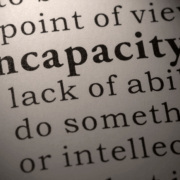The Role of Charitable Remainder Trusts in Estate and Medicaid Planning
For many West Virginians, building a lifetime of assets comes with a dual desire: to secure a comfortable future for themselves and their families, and to give back to the communities and causes that matter most. These goals can sometimes feel at odds, especially when faced with the escalating costs of long-term care and the complex rules governing Medicaid eligibility. How can you support your favorite charity, create a reliable income stream for retirement, and protect your legacy without jeopardizing potential future benefits?
This is a challenge many families face, believing they must choose one goal over the other.
What Exactly Is a Charitable Remainder Trust?
A Charitable Remainder Trust is a type of irrevocable “split-interest” trust. This legal arrangement separates the trust’s interests between two sets of beneficiaries. First, an income beneficiary (or beneficiaries) receives a steady stream of payments from the trust for a defined period—either for their lifetime or a set number of years. Second, after that period ends, the remaining assets in the trust, the “remainder,” are distributed to a designated charity or charities.
Think of it as creating a personal endowment. You place assets into the trust, receive an income from those assets during your retirement, and then the original principal goes on to do good work in the world through a cause you support.
The key participants in a CRT include:
- The Grantor: The individual who creates and funds the trust.
- The Income Beneficiary: The person (or persons) who receives payments from the trust. This is often the grantor, a spouse, or a child.
- The Trustee: The person or institution responsible for managing the trust’s assets, making investments, and distributing payments.
- The Charitable Beneficiary: The qualified 501(c)(3) organization that receives the remaining assets at the end of the trust’s term.
How Does a Charitable Remainder Trust Work in Practice?
The mechanics of a CRT follow a clear, structured process that provides benefits at multiple stages. While the legal document itself is complex, the operational flow is straightforward.
- Funding the Trust: The grantor transfers assets—such as cash, stocks, or real estate—into the irrevocable trust. This transfer is permanent; the assets cannot be reclaimed.
- Immediate Tax Deduction: Upon funding the trust, the grantor is eligible for an immediate partial income tax deduction. The value of this deduction is based on a complex IRS calculation that considers the trust’s term, the payout rate, and prevailing interest rates, ultimately representing the present value of the future gift to charity.
- Asset Management: The trustee takes control of the assets. A significant advantage is that the CRT is a tax-exempt entity. This means the trustee can sell highly appreciated assets, like stocks or property that have grown in value, without triggering immediate capital gains taxes. The full proceeds can then be reinvested to generate income.
- Receiving Payments: The trust makes regular payments to the income beneficiary according to the terms set in the trust document. This creates a predictable income stream for retirement or other financial needs.
- Final Charitable Gift: When the trust term ends (either upon the death of the income beneficiary or after a specified number of years), the trustee distributes all remaining assets to the chosen charity, fulfilling the grantor’s philanthropic goals.
The Two Main Types of CRTs: CRAT vs. CRUT
Charitable Remainder Trusts are not one-size-fits-all. They come in two primary forms, and the choice between them depends on your financial goals, risk tolerance, and the nature of the assets used to fund the trust.
Charitable Remainder Annuity Trust (CRAT): This trust pays a fixed dollar amount to the income beneficiary each year. This amount is determined when the trust is created and never changes, regardless of the trust’s investment performance.
- Pros: Provides a highly predictable and stable income stream.
- Cons: Payments do not increase with inflation. No additional contributions can be made to the trust after it is funded.
Charitable Remainder Unitrust (CRUT): This trust pays a fixed percentage of its value to the income beneficiary. The trust’s assets are revalued annually, so the payment amount can increase or decrease based on investment performance.
- Pros: Offers the potential for income to grow over time, providing a hedge against inflation. Additional contributions can be made.
- Cons: The income stream is variable and can decline in a down market.
The decision between a CRAT and a CRUT is a foundational element of the planning process, tailored to whether an individual prioritizes stability or growth potential.
What are the Primary Benefits of a Charitable Remainder Trust?
A well-structured CRT offers a powerful combination of financial and personal benefits that are difficult to achieve through other planning tools.
A Reliable Income Stream: For retirees, a CRT can convert a non-income-producing asset (like undeveloped land) into a dependable source of cash flow for life or a set term.
Significant Tax Advantages: This is one of the most compelling reasons to consider a CRT.
- Immediate Income Tax Deduction: You receive a charitable deduction in the year you fund the trust, which can lower your current tax bill.
- Capital Gains Tax Deferral: By transferring a highly appreciated asset to the trust, you avoid paying the capital gains tax that would be due if you sold it yourself. The trust can sell the asset tax-free and reinvest the entire amount.
- Estate Tax Reduction: Because the assets are in an irrevocable trust, they are removed from your taxable estate, potentially reducing or eliminating federal or state estate taxes for very large estates.
Fulfillment of Philanthropic Goals: A CRT allows you to make a substantial future gift to a charity you are passionate about, creating a lasting legacy.
Asset Diversification: If a large portion of your net worth is tied up in a single asset, such as company stock or a commercial property, a CRT provides a tax-efficient way to sell that asset and diversify the proceeds into a balanced portfolio designed to generate income.
The Intersection: How CRTs Fit into West Virginia Medicaid Planning
This is where planning becomes particularly nuanced. West Virginia, like all states, has strict income and asset limits for Medicaid eligibility for long-term care. There is also a five-year “look-back” period, where Medicaid officials scrutinize any asset transfers to determine if they were made to improperly qualify for benefits.
It is important to state clearly: a CRT is not a direct asset protection tool for Medicaid. The income stream it generates is countable for Medicaid eligibility. However, it can play a role in a broader, long-term strategy developed well in advance of needing care.
- The Income Stream is Countable: The monthly or annual payments from the CRT to you are considered income by West Virginia Medicaid. If this income exceeds the state’s limit (which is low), it will render you ineligible for benefits. This income would need to be managed, possibly by paying for care privately or directing it into a specialized trust like a Qualified Income Trust (QIT) if your income is over the limit.
- The Principal is a Non-Countable Asset: Once assets are transferred into the irrevocable CRT and the five-year look-back period has passed, the principal is no longer considered your countable asset. It belongs to the trust.
- Strategic Long-Term Planning: The most effective use of a CRT in a Medicaid context is as a pre-planning tool. For example, a healthy 65-year-old couple could transfer appreciated real estate into a CRT. They avoid capital gains tax, receive an income stream to supplement their retirement, get a tax deduction, and remove the asset from their estate. They are planning for their financial future and charitable legacy simultaneously, long before the prospect of needing Medicaid is on the horizon.
Attempting to use a CRT for “crisis” Medicaid planning—when care is needed immediately or in the near future—is generally not viable and can result in a penalty period of ineligibility.
What Assets are Best for Funding a Charitable Remainder Trust?
The type of asset used to fund a CRT dramatically impacts the potential benefits. While cash can be used, the most effective strategies involve assets that have significantly appreciated in value.
- Publicly Traded Securities: Stocks, bonds, and mutual funds that have grown substantially are ideal. Selling them inside the tax-exempt trust preserves the wealth that would otherwise be lost to capital gains tax.
- Real Estate: Investment properties, family farms, or undeveloped land can be placed in a CRT. The trustee can then sell the property, and the full proceeds can be invested to provide income without a large, immediate tax bill.
- Closely Held Stock: Owners of private businesses can use a CRT as part of a succession plan, though this involves complex valuation and legal considerations.
- Cryptocurrency: For early investors with significant gains, a CRT can be a tax-efficient way to convert digital assets into a stable income stream, though this is a highly specialized area.
Potential Drawbacks and Considerations
While powerful, a CRT is not the right tool for everyone. It is important to have a clear-eyed view of the potential downsides before committing to this irrevocable path.
- Irrevocability: The decision to fund a CRT cannot be undone. You will not have access to the trust principal again.
- Complexity and Costs: These are sophisticated legal instruments that require experienced legal counsel to draft and may involve ongoing administrative and management fees.
- Market Risk: For a CRUT, your income stream is tied to the market’s performance. In a prolonged downturn, your payments could shrink.
- Not for Heirs: As noted, the assets will not go to your children. A wealth replacement strategy is often necessary if providing an inheritance is a primary goal.
A Forward-Looking Strategy for West Virginians
The legal and financial landscape is constantly evolving. A Charitable Remainder Trust is a forward-thinking tool that allows you to secure a personal income stream, achieve significant tax efficiencies, and create a lasting charitable legacy. However, it must be structured with precision and a full appreciation for how it interacts with tax law, estate planning principles, and public benefits regulations. These are not do-it-yourself strategies. A misstep in the design or implementation of a CRT can have serious financial and legal consequences.
Contact Hewitt Law PLLC today to schedule a consultation. Our team is dedicated to helping West Virginians develop comprehensive strategies that protect their hard-earned assets and provide for the future well-being of their families and their communities. We can help you build a plan that secures your legacy for generations to come.













Leave a Reply
Want to join the discussion?Feel free to contribute!